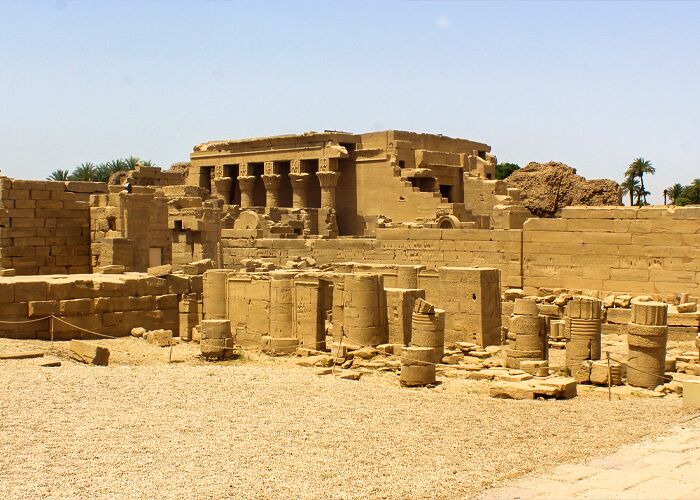Dendera Temple
Temples were very important in ancient Egyptian architecture, as shown by the Dendera Temple. It is clear that gods and religion were very important to the ancient Egyptians. Inscriptions on the walls and tombs of many Egyptian temples, especially in Luxor, tell us about the history of the Pharaohs.
The Dendera Complex is one of the most important temples in Egypt. The Complex is thought to be one of Egypt’s best-kept complexes. It is about 2.5 km southeast of Dendera and south of Abidos.
About how the Dendera Temple Complex came to be
The buildings that are still standing were made during the time of the Ptolemies. In 2250 B.C., the first building in the complex was put up. The Mentuhotep II monument, which was built in 1995 BC but moved to Cairo, is the oldest building on this site. The Mammisi monument, which was built by Nectanebo II in 345 BC, is the oldest building in the Complex.
The Temple of Hathor was built first, which led to the rest of the complex (the goddess of fertility but predynastic was a representative of love, beauty, and joy).
The Temple of Hathor is part of the Dendera Temple complex.
When the Dendera Complex was built
The size of the Complex is 40,000 m2. A 10 m high wall goes all the way around the Complex. Since the beginning of Ancient Egypt, chapels and sanctuaries have been built. Because it was buried in sand, the Complex is better kept. The Temple of Hathor is the most important temple in the group.
In the same area as the Temple of the Birth of Isis is another temple. There’s also a holy lake and an adobe health centre (it was used to bathe in the sacred water to obtain the healing of the goddess).
The Temple of Hathor
During the time of the Ptolemies, the Temple was built. It was finished during the reign of the Roman Emperor Trajan. The entrance to the Temple leads to a big hall with 18 columns that are each 15 metres tall. The goddess Hathor stands on top of each column (face of a woman with cow ears). On a blue background, hieroglyphics are drawn on the ceiling and walls.
Inside, there are 6 columns in the second hypostyle room, which is where the main sanctuary of the goddess is. There are small rooms, a treasure room, an offering room, and storage rooms on both sides. There is a crypt under the Temple where the papyri were kept.
The Twelve Signs of Dendera
On the ceiling of a chapel of the god Osiris is a copy of Dendera’s Zodiac. It is in the shape of a circle and has the signs of the zodiac: the ram, the bull, the twin of the sky, the crab, the Virgo, the lion, the scale, the scorpion, the goat, the archer, the water pots, and the fish with flashing tails. The original Zodiac is now in the Louvre Museum in Paris. It was moved there in 1820 so it could be used in Napoleon’s wars.
The Dendera Light Bulbs
In a corridor of the crypt, there are writings that look like the bulbs with big wire coils. The fact that they knew about electricity shows that they did. But Egyptologists say that the god Harsomtus, who was the son of the goddess Hathor and the god Horus, was born in the form of a snake inside a lotus flower, so these pictures show the birth of the god Harsomtus.
The trip to Upper Egypt
Check out the travel packages to Egypt to see the best-preserved temple of Dendera and the beautiful Pharaonic architecture. Also, don’t miss the chance to cruise down the Nile and see other temples in Upper Egypt.

